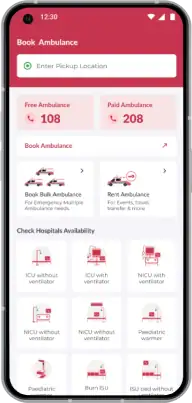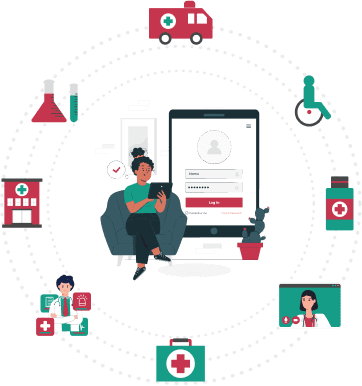When an ambulance blazes through traffic, sirens blaring and lights flashing, it's a sight that grabs everyone's attention. But have you ever wondered if those medical heroes have the authority to bend the rules of the road?
Ambulances play a critical role in saving lives during emergencies. They are equipped with life-saving equipment and staffed by medical professionals who strive to reach patients as quickly as possible. However, the question arises: can ambulances break traffic rules in order to fulfill their life-saving mission? In this blog, we will explore the traffic rules for ambulances, incidents where ambulances can break traffic rules and the importance of striking a balance between urgency and public safety.
I. Understanding the Regulations:
Traffic Rules for Ambulances:
Ambulances are granted certain exemptions to traffic rules to ensure timely medical assistance. However, these exemptions come with responsibilities to maintain public safety:
- They are allowed to exceed the speed limit, but only when it is safe to do so.
- Ambulances must follow traffic signals and stop at red lights, unless it poses a risk to the patient's life.
- While overtaking other vehicles, ambulances should use caution and alert drivers with their sirens and lights.
- Ambulance drivers should be trained to prioritize the safety of patients and other road users.
- Misuse of ambulances, such as using them for personal purposes, is strictly prohibited and can result in penalties.
- It is important for all road users to be aware and cooperative when encountering an ambulance on the road, allowing it to pass safely and quickly.
- Respect for traffic rules and regulations ensures that ambulances can effectively reach those in need of urgent medical care.
The Role of Sirens and Emergency Lights:
- Ambulances use sirens and emergency lights to signal their presence and request the right of way.
- The sound of sirens and the presence of flashing lights indicate that an ambulance is responding to an emergency situation.
- It is crucial for drivers to yield and make way for ambulances when they are using these signals.
II. Instances Where Ambulances May Break Traffic Rules:
Emergency Situations:
While ambulances are generally exempt from traffic rules in emergency situations, there are instances where ambulances can break traffic rules to ensure the timely and safe transportation of patients. Here are some examples:
- Running red lights: Ambulances may need to go through red lights to avoid delays and quickly reach the scene of an emergency. They usually slow down and proceed with caution to ensure the safety of other road users.
- Driving against traffic: In certain situations, such as on one-way streets or in congested areas, ambulances may need to drive against the flow of traffic to reach their destination more efficiently
- Exceeding speed limits: Ambulances often need to travel at high speeds to reduce response times. However, they are expected to do so while taking into account the safety of other vehicles and pedestrians on the road.
- Passing on the shoulder: Ambulances may use the shoulder of the road to bypass slower traffic, especially in congested areas where there is no other way to navigate through the traffic quickly. This is the case, when an ambulance can break traffic rules.
- Ignoring stop signs: In emergency situations, ambulances may bypass stop signs or yield signs to maintain momentum and ensure quick transportation of patients to medical facilities.
- Making illegal U-turns: If it is the quickest and safest route, ambulances may make U-turns in locations where it is typically prohibited, such as on busy roads or at intersections.
III. Balancing Urgency and Public Safety:
Specialized Training for Ambulance Drivers:
Specialized training for ambulance drivers plays a crucial role in helping them balance the urgency to break traffic rules while ensuring the safety of all road users. This training equips drivers with the necessary skills to navigate through traffic efficiently and responsibly during emergency situations. Ambulance drivers undergo extensive training that includes understanding traffic laws, defensive driving techniques, effective communication and situational awareness. They learn to prioritize patient care while maintaining a high level of safety on the roads. By understanding the gravity of their responsibility and the potential risks associated with reckless driving, these trained drivers are better equipped to make informed decisions, minimize risks and ensure timely medical assistance without compromising public safety.
Communication and Coordination:
To balance the urgency to break traffic rules, drivers of emergency vehicles can rely on effective communication and coordination. By maintaining constant communication with relevant authorities and utilizing technology, drivers can ensure a smooth flow of information about the emergency situation. This allows them to receive real-time updates on traffic conditions, roadblocks and alternative routes. Furthermore, coordination with traffic control centers and local law enforcement agencies can help drivers navigate congested areas more efficiently and safely.
Public Awareness and Education:
Public awareness and education play a crucial role in balancing the urgency of emergency situations with public safety. By imparting knowledge about the importance of timely medical assistance and the privileges granted to ambulances, individuals can better understand the need for exemptions to traffic rules. Public awareness campaigns can highlight the potential consequences of delaying medical aid and emphasize the critical role ambulances play in saving lives. Simultaneously, educating the public about the proper use of emergency vehicles and the penalties for misuse can help deter fraudulent activities. Promoting responsible behavior and respect for the rights of other road users through public education can foster a culture of cooperation, ensuring that ambulances can navigate through traffic efficiently while minimizing risks to public safety.
Conclusion:
In conclusion, while ambulances may, under specific circumstances, need to bend traffic rules to fulfill their life-saving mission, it is crucial to strike a balance between urgency and public safety. MedCab, as a provider of ambulance services, understands the importance of timely medical assistance without compromising public welfare. With highly trained drivers and a commitment to accountability, MedCab prioritizes the well-being of all road users while ensuring prompt response to emergencies. By promoting public awareness, improving communication and coordination and upholding standards of responsible driving, MedCab aims to create a safer environment on the roads for everyone. Together, we can support the critical work of ambulances and help save lives while ensuring the safety of our communities.






